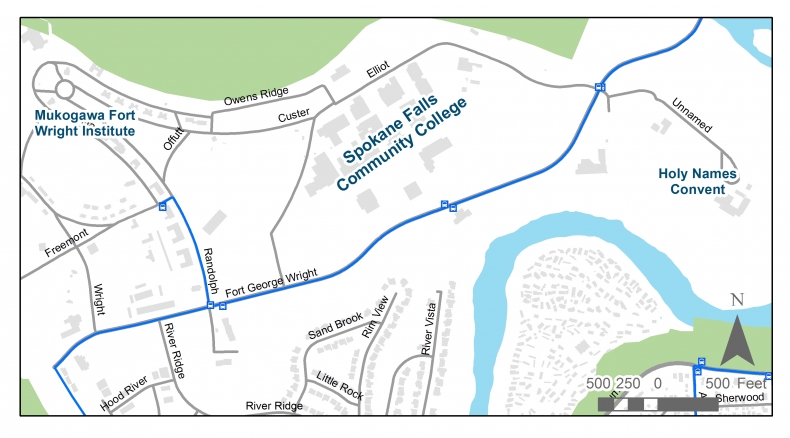Something kind of cool happened in the Transportation Technical Committee (TTC) meeting today. One of the items on the agenda was "Scope Change Requests." Staff from the City of Spokane and Spokane Valley were requesting to change the description of planned projects that are being paid for with federal funds provided through SRTC. To be in compliance, requested changes have to be run through SRTC for approval if they wish to change the scope significantly.
Two projects really stood out because they would provide significant improvements over what is currently planned. The first project was the Downtown Spokane Bicycle Network. It had two phases and was essentially finished in 2015. However, in looking back at the first phase, City staff was concerned that they had pretty much done the minimum on that project, basically just painting some bike lanes and calling it good. Their scope change request was to go back and improve upon that by adding
sharrows or other markings to the roadway and signs as well. These improvements won't cost any additional money than is already dedicated to the project as the project came in under budget.
The second project, in Spokane Valley, is for Mission Avenue near the intersection with Long Road. The original plan was to make the section in question three lanes, with one lane each direction and a center turn lane. It would also have sidewalks and bike lanes. After meeting with people who live in the neighborhood several times, Valley staff decided to change the project description after realizing that's not what residents want. Instead, they are seeking to eliminate the third lane and just make the roadway two lanes. The extra space from the third lane will instead (if approved by the SRTC Board) be used for the bike lanes on each side and separated sidewalks. Plus they requested a roundabout at the intersection with Long Road in order to slow traffic down. This change also will not require any additional funding.
What is exciting about this is that it shows how public involvement is working and that staff at area jurisdictions really do care. The City could have walked away from their bike network project realizing it wasn't as good as it could be and said "good enough." But they didn't. And Spokane Valley staff could have politely thanked citizens for their input and carried on with the project as planned. But they didn't.
So here is the next step: members of the TTC voted today to recommend to SRTC's Board that they accept these scope changes. The Board will vote in February on whether to move ahead with them.




























